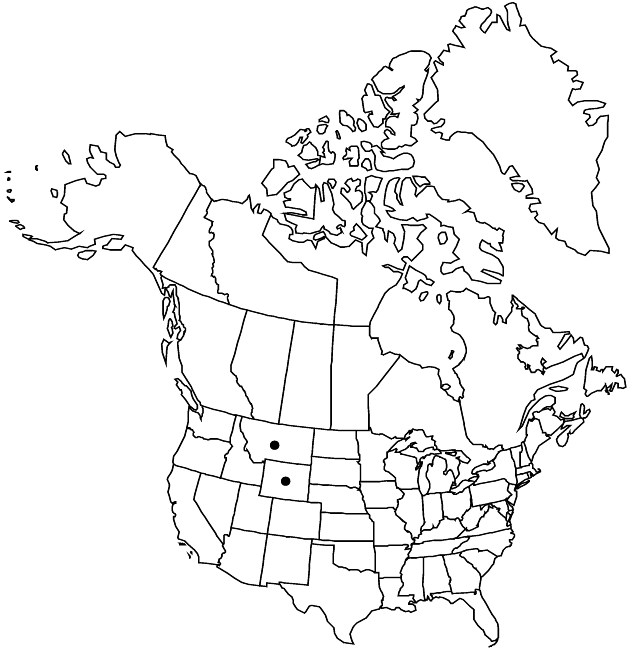Difference between revisions of "Townsendia spathulata"
Trans. Amer. Philos. Soc., n. s. 7: 305. 1840.
FNA>Volume Importer |
FNA>Volume Importer |
||
| Line 46: | Line 46: | ||
|publication year=1840 | |publication year=1840 | ||
|special status= | |special status= | ||
| − | |source xml=https://jpend@bitbucket.org/aafc-mbb/fna-data-curation.git/src/ | + | |source xml=https://jpend@bitbucket.org/aafc-mbb/fna-data-curation.git/src/8f726806613d60c220dc4493de13607dd3150896/coarse_grained_fna_xml/V19-20-21/V20_426.xml |
|tribe=Asteraceae tribe Astereae | |tribe=Asteraceae tribe Astereae | ||
|genus=Townsendia | |genus=Townsendia | ||
Revision as of 16:23, 18 September 2019
Perennials, 1–2 cm (usually ± pulvinate). Stems ± erect; internodes 0.1–1 mm, ± villous. Leaves basal and cauline, ± spatulate, 7–10(–20) × 1.5–2(–4) mm little, it at all, fleshy, faces ± villous or sericeous. Heads ± sessile. Involucres ± urceolate, 6–12(–16) mm diam. Phyllaries 16–24+ in 3–4 series, the longer lance-ovate to lanceolate, 6–8(–9) mm (l/w = 4–7), apices usually acute, sometimes attenuate, abaxial faces ± villous to strigillose. Ray florets 12–30+; corollas white to pinkish adaxially, laminae 3–12 mm, abaxially usually glandular-puberulent, sometimes glabrous. Disc florets 16–30+; corollas 4–5+ mm. Cypselae 2.5–4 mm, faces hairy, hair tips glochidiform or forked; pappi readily falling, of 14–30 subulate to setiform scales 4.5–6+ mm (± connate basally).
Phenology: Flowering May–Jun.
Habitat: Open ridges
Elevation: 1600–2300 m
Discussion
Selected References
None.
